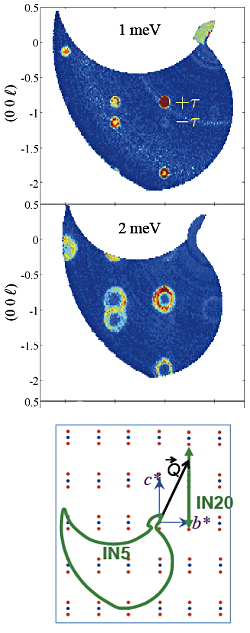- Home
- Institut Néel
- Research teams
- Technical Groups & Services
- Work at the Institut
- Partnerships
Magnetism has been central to the history of research in Grenoble. Its themes have been constantly renewed, in particular with the emergence of spintronics, and it is a very active field of research at Institut Néel today.
Several of the Néel Institute’s research teams work on fundamental magnetic properties : magnetic interactions, such as the coupling between magnetic layers, or low dimensional and non-conventional magnetic order; the couplings between magnetism and other degrees of freedom, notably the ionic charge positions, which induce new phenomena like multiferroism, displacive magnetic transitions; the effects of electric fields on the magnetism of thin films.
Spintronics– the coupling of magnetism and electronic transport- is also a major research axis. Its fundamental aspects are studied with relation to present and potential applications in information and communication technology. Various device types are designed and studied, for example: magnetic domain walls in nanowires, manipulated by a spin-polarized current; molecules that combine the classical properties of a magnet with the quantum properties of a nanometre-scale object; single spins in quantum dots, manipulated by electrical or optical methods.
We also design various families of functional materials for energy-efficiency applications: new generation permanent magnets for electric motors or wind turbine generators, materials showing giant magneto-caloric effects for magnetic refrigeration without greenhouse gases; shape-memory magnetic alloys for applications in actuators or energy recuperators.

Neutron scattering from the magnon excitation in a structurally
enantiopure helically modulated ferrochiral
triangular magnet Ba3NbFe3Si2O14
Asymmetries of spectral weight reveal the structural chirality.
